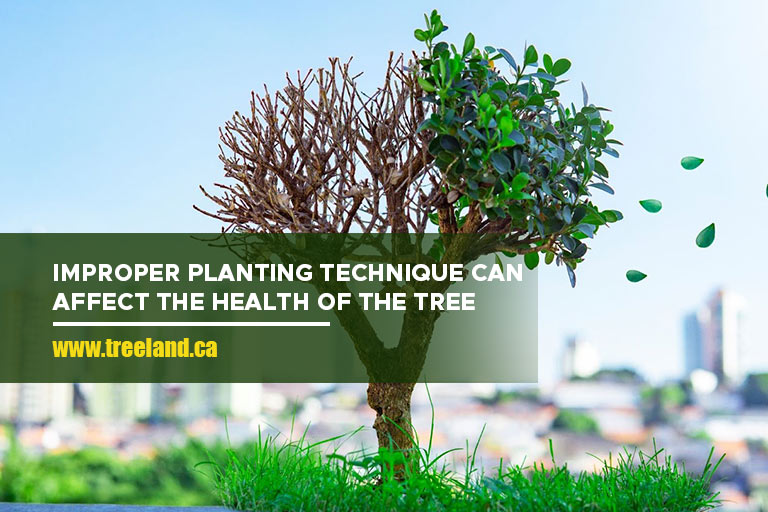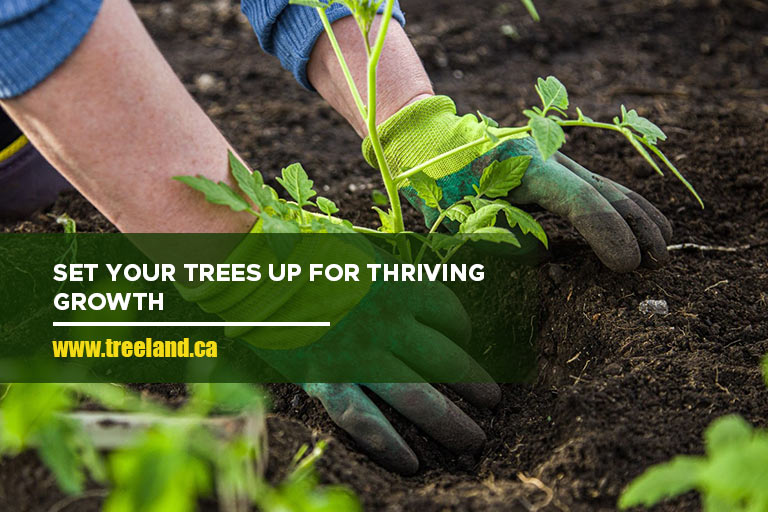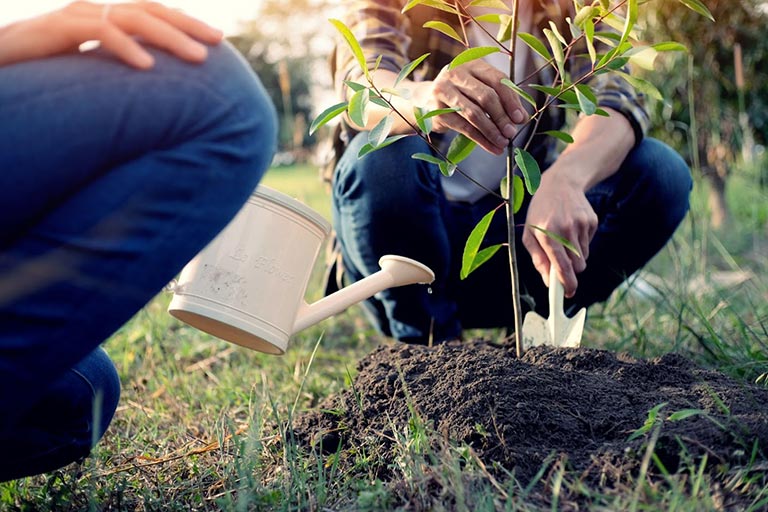Whether it is a shade or evergreen tree, planting trees is a rewarding endeavour that contributes to the beauty and health of our environment. However, ensuring the successful establishment of trees requires attention to detail and adherence to best practices.
In this guide, we delve into the common tree planting mistakes that can hinder the growth and vitality of your trees. By understanding and avoiding these errors, you can set your trees up for long-term success and enjoyment.
Common Tree Planting Mistakes

When it comes to tree planting, even seemingly minor errors can have significant consequences. Many individuals underestimate the importance of proper tree establishment, leading to avoidable challenges down the road. Understanding the impact of tree planting mistakes is essential for ensuring the health and longevity of your trees.
Avoiding Tree Planting Blunders
Trees not only beautify our surroundings but also contribute to cleaner air, improved water quality, and enhanced biodiversity. However, the journey of tree planting is not without its challenges, and avoiding blunders is essential for the successful establishment of our arboreal companions.
-
Neglecting Proper Site Selection
Choosing the right location for your tree is paramount. Avoid planting trees in areas with poor soil conditions, limited sunlight exposure, or inadequate drainage. Neglecting these factors can stunt the growth of your tree and diminish its overall health.
-
Planting Trees Too Deep or Too Shallow
The depth at which a tree is planted plays a significant role in its long-term health. Avoid burying the tree too deeply, as this can suffocate the roots and hinder nutrient uptake. Conversely, planting trees too shallowly can expose their roots to dehydration and instability.
-
Overcrowding Trees
While it may be tempting to maximize greenery in a limited space, overcrowding trees can lead to competition for resources such as sunlight, water, and nutrients. Ensure that trees have ample space to grow and develop without encroaching on each other’s territory.
-
Underestimating Post-Planting Care
Planting a tree is just the beginning of its journey to maturity. Neglecting post-planting care, such as watering, mulching, and pruning, can jeopardize the tree’s ability to establish strong roots and withstand environmental stressors.
Common Errors in Tree Transplantation
The transplantation of trees represents a delicate balance between preservation and relocation. Whether for urban development projects, landscape renovations, or preservation efforts, the process of transplanting trees requires meticulous attention to detail and a deep understanding of horticultural principles.
-
Inadequate Root Preparation
Failing to adequately prepare the root system for transplantation is a common pitfall. Insufficient root pruning and failure to establish a healthy root ball can impede the tree’s ability to establish itself in its new environment.
-
Rough Handling During Transportation
The journey from the original planting site to the new location is fraught with potential hazards. Rough handling during transportation can cause damage to the tree’s delicate root system, leading to transplant shock and diminished vigour.
-
Insufficient Post-Transplant Care
Once transplanted, trees require careful attention and nurturing to acclimate to their new surroundings. Neglecting post-transplant care, such as proper watering, mulching, and monitoring for signs of stress, can exacerbate transplant shock and hinder root establishment.
Best Practices for Tree Planting

To ensure the successful establishment of your trees, it is essential to adhere to best practices for tree planting. By following these guidelines, you can avoid common pitfalls.
Planting Trees Correctly
It’s imperative to understand the significance of proper tree planting. In this section, we will delve into the essential steps and techniques required for planting trees correctly, laying the groundwork for their long-term success.
Here are some key tips to consider when planting trees:
-
Selecting an Appropriate Location
Before digging a hole, carefully assess the planting site to ensure it meets the tree’s requirements for sunlight exposure, soil type, and drainage. Choose a location that provides ample space for the tree to grow and thrive without encountering obstacles such as buildings or utility lines.
-
Preparing the Planting Site
Dig a hole that is wide enough to accommodate the tree’s root ball with some extra space for root expansion. Loosen the soil around the planting area to facilitate root penetration and encourage outward growth. Remove any debris or weeds that may compete with the tree for resources.
-
Planting at the Correct Depth
Position the tree in the center of the planting hole and ensure that the top of the root ball is level with the surrounding soil surface. Planting the tree too deep can suffocate the roots, while planting it too shallow may expose the roots to dehydration and instability.
-
Backfilling with Native Soil
Once the tree is properly positioned, backfill the hole with the native soil, gently tamping it down to eliminate air pockets. Avoid amending the soil excessively, as this can create artificial boundaries that may hinder root expansion. Use water to settle the soil and promote good root-to-soil contact.
Final Thoughts
Avoiding common tree planting mistakes is essential for ensuring the health and vitality of your trees. By following best practices and considering the unique needs of each tree species, you can create a thriving landscape that enhances the beauty and value of your property.
For expert advice and high-quality trees for sale in Richmond Hill, contact Caledon Treeland at 905-880-1828. Let us help you make your tree planting project a success!
Frequently Asked Questions
-
Why is it important to avoid mistakes when planting trees?
Avoiding mistakes ensures the long-term health and survival of the tree. Proper planting techniques promote strong root development, resistance to disease, and overall growth.
-
What are some signs that I’ve made a mistake when planting a tree?
Signs of planting mistakes include wilting leaves, stunted growth, yellowing foliage, and leaning or unstable trees.
-
What should I do if I’ve already made a mistake when planting a tree?
If you’ve already made a mistake, take corrective action as soon as possible. This may involve adjusting the tree’s planting depth, improving soil conditions, providing proper watering and mulching, or seeking professional assistance.
-
What are the long-term consequences of tree planting mistakes?
Tree planting mistakes can lead to poor growth, susceptibility to diseases and pests, increased maintenance requirements, and even premature death of the tree.
-
Can tree planting mistakes harm the environment?
Yes, tree planting mistakes can harm the environment by disrupting local ecosystems, reducing biodiversity, and contributing to soil erosion and water runoff issues.

